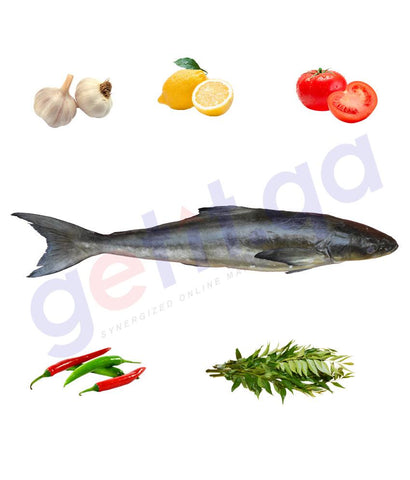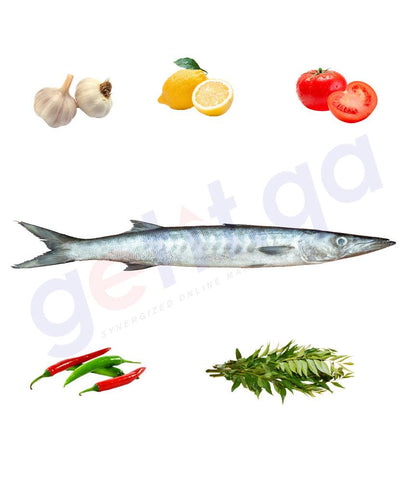Malabar Travally (VATTA) - Big(6kg above only)
Country of Origin: Qatar
Short Description :- The Malabar Travally (bluefin travally) is a large fish, growing to a maximum known length of 117 cm and a weight of 43.5 kg, however it is rare at lengths greater than 80 cm. It is similar in shape to a number of other large jacks and trevallies, having an oblong, compressed body with the dorsal profile slightly more convex than the ventral profile, particularly anteriorly. This slight convexity leads to the species having a much more pointed snout than most other members of Caranx. The dorsal fin is in two parts, the first consisting of 8 spines and the second of 1 spine followed by 21 to 24 soft rays. The anal fin consists of 2 anteriorly detached spines followed by 1 spine and 17 to 20 soft rays.The pelvic fins contain 1 spine and 20 soft rays.The caudal fin is strongly forked, and the pectoral fins are falcate, being longer than the length of the head. The lateral line has a pronounced and moderately long anterior arch, with the curved section intersecting the straight section below the lobe of the second dorsal fin. The curved section of the lateral line contains 55-70 scales while the straight section contains 0 to 10 scales followed by 27 to 42 strong scutes. The chest is completely covered in scales. The upper jaw contains a series of strong outer canines with an inner band of smaller teeth, while the lower jaw contains a single row of widely spaced conical teeth. The species has 25 to 29 gill rakers in total and there are 24 vertebrae present. The eye is covered by a moderately weakly developed adipose eyelid, and the posterior extremity of the jaw is vertically under or just past the anterior margin of the eye.Despite their wide range, the only geographical variation in the species is the depth of the body in smaller specimens.
Distribution :- The bluefin trevally is abundant in the central Indo-Pacific region, found throughout all the archipelagos and offshore islands including Indonesia, Philippines and Solomon Islands. Along continental Asia, the species has been recorded from Malaysia to Vietnam and mainland China. Its offshore range does extend north to Hong Kong, Taiwan and southern Japan in the north western Pacific. In the south, the species reaches as far south as Sydney in Australia. Its distribution continues throughout the western Pacific including Tonga, Western Samoa and Polynesia, and the Hawaiian Islands. The easternmost limit of the species distribution is the Mesoamerican coastline between Mexico and Ecuador in the central eastern Pacific, including islands such as the Galápagos Islands.














